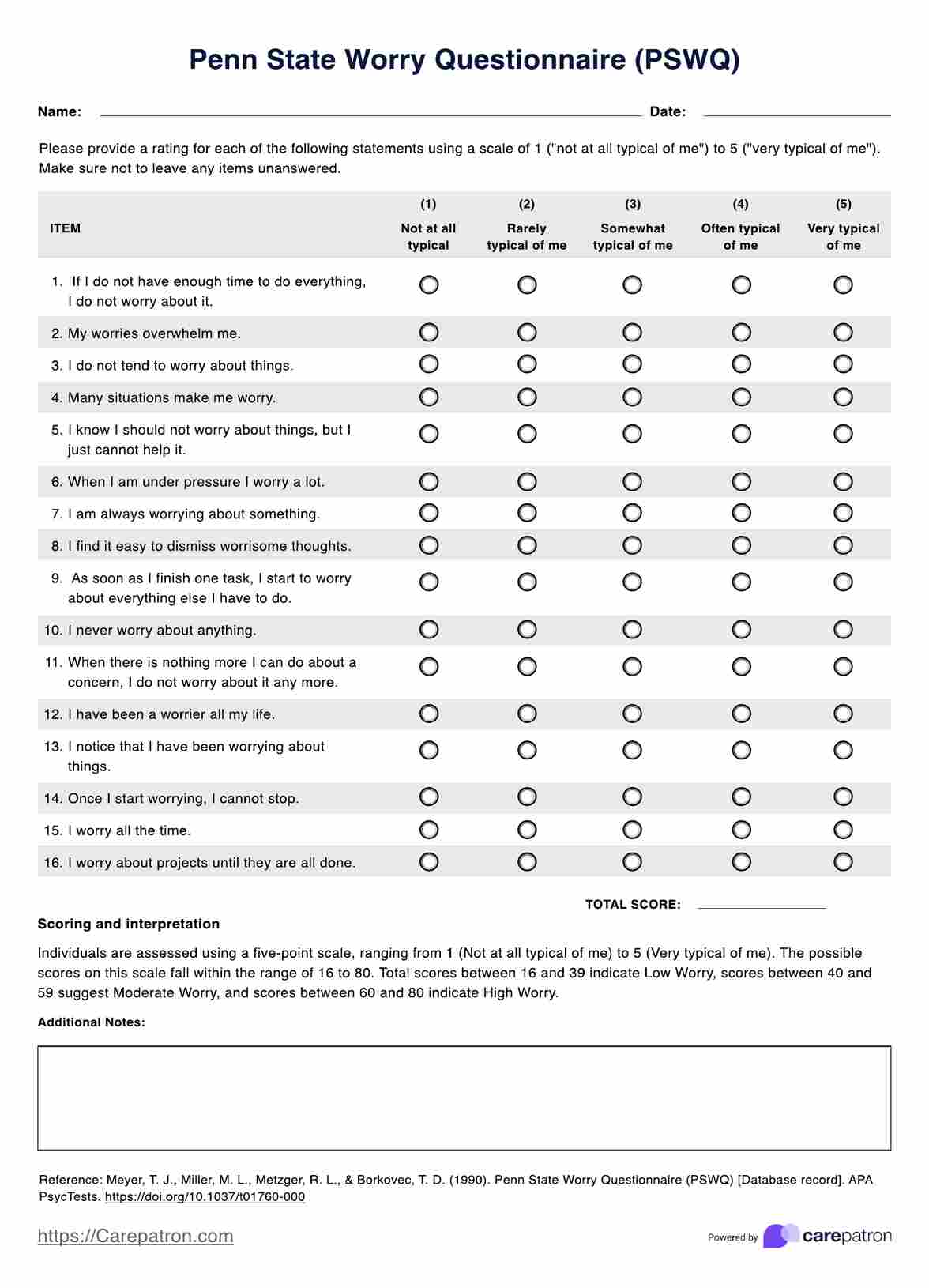Mental health professionals use the Penn State Worry Questionnaire to measure their clients' worry levels. It is a valuable tool for diagnosing Generalized Anxiety Disorder and other forms of chronic anxiety.

Penn State Worry Questionnaire
Download our free Penn State Worry Questionnaire template and example. Use it to assess your client's level of worry and anxiety.
Use Template
Penn State Worry Questionnaire Template
Commonly asked questions
Individuals can complete the PSWQ within 5 to 10 minutes.
You can use the Penn State Worry Questionnaire to assess anxiety levels in your clients at any point during their treatment. It can be used as a baseline measure or as an ongoing assessment tool throughout therapy.
EHR and practice management software
Get started for free
*No credit card required
Free
$0/usd
Unlimited clients
Telehealth
1GB of storage
Client portal text
Automated billing and online payments











